News Archive
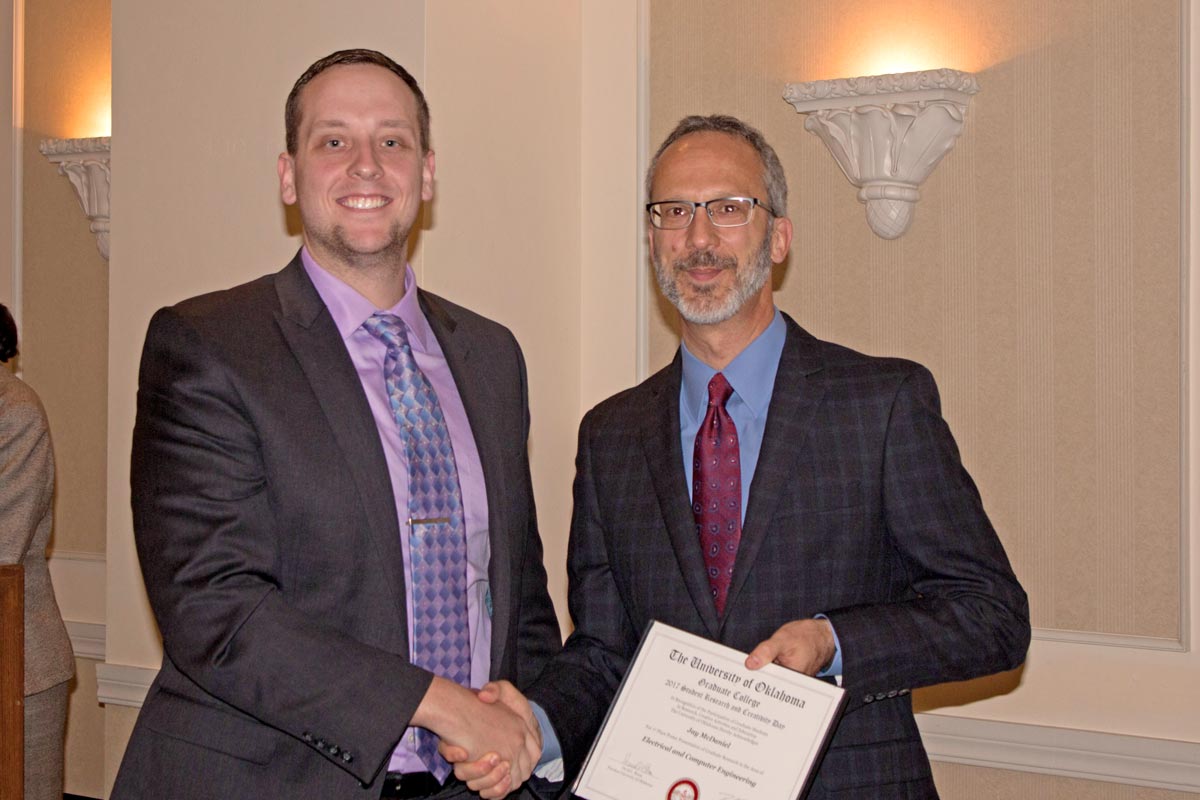
ARRC student Jay McDaniel, won the first place in the poster competition at the Graduate College 2017 Student Research and Creativity Day. Jay is current pursuing his Ph.D. degree in Electrical and Computer Engineering under the supervision of Dr. Hjalti Sigmarsson. Congratulations Jay!
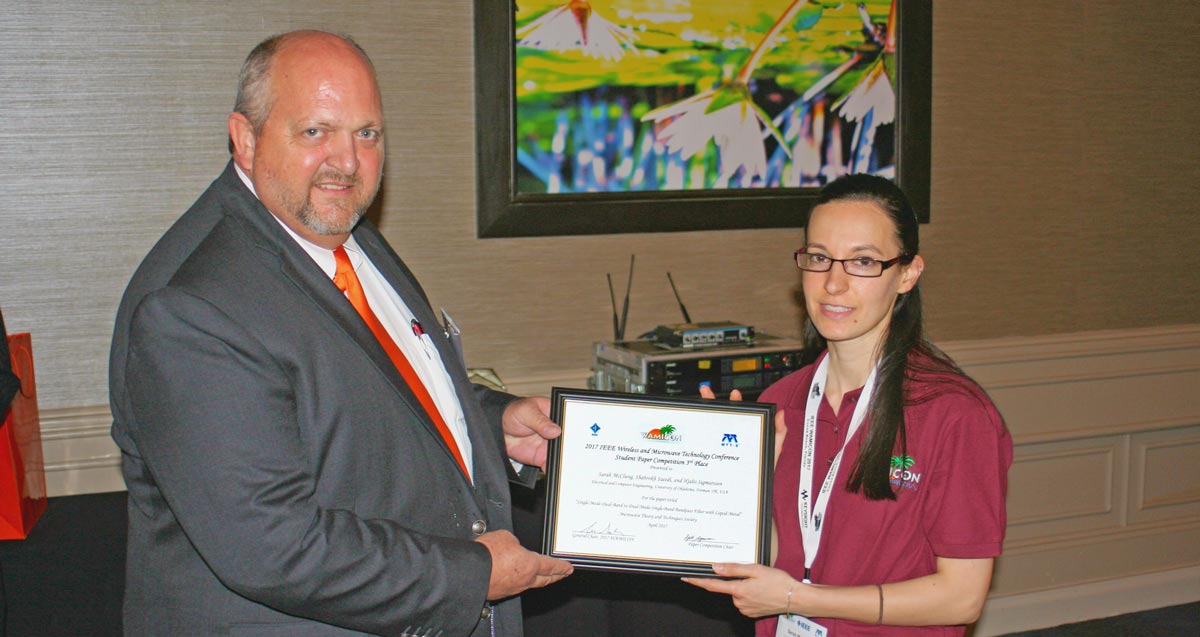
ARRC student Sarah McClung, received the 3rd place in the student paper competition at the 2017 IEEE Wireless and Microwave Technology Conference (WAMICON 2017). Sarah is currently pursuing her M.S. degree in Electrical and Computer Engineering under the supervision of Dr. Hjalti Sigmarsson. Congratulations Sarah!
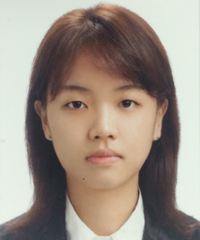
Sungmin O and co-author Dr. Pierre Kirstetter received the Best Paper Award at the International Symposium on Weather Radar and Hydrology held recently in Seoul, Korea. Sungmin presented the paper, “Diurnal Variation of Summer Rainfall Over the Continental United States Based on MRMS Q3 Radar Data and It’s Application to Satellite Validation”, based on the work she performed during her 6-month stay at OU. Dr. Kirstetter was Ms. O’s advisor during her stay.

ARRC/ECE Professor Dr. Caleb Fulton has been awarded a President's Association Presidential Professorship. Presidential Professors are those faculty members who excel in all their professional activities and who relate those activities to the students they teach and mentor. They inspire their students, mentor their undergraduate and graduate students in the process of research and creative activity within their discipline, and exemplify to their students and colleagues the ideals of a scholar through their endeavors in teaching, research & creative activity, and service. Congratulations Caleb!

Congratulations to Ashley Palmer and Matt Judy for their participation in OU¹s Undergraduate Research Day, hosted by the OU Honors College. Their presentation, titled "A Ground-Based Radar to Enable the Next Generation of Atmospheric Measurements", received 1st Place in the CEES / Computer Engineering session of the daylong event. Ashley and Matt will share a cash award of $250. A reception to honor of all the recipients will be held on Tuesday April 18th, 3:30 p.m., in the Nancy L. Mergler Library at the Honors College, David L. Boren Hall.
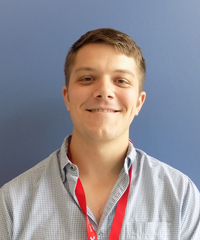
ARRC/ECE PhD student Andrew Byrd was recently awarded 2nd place in the Oral Presentation Category of the AMS 33rd Conference on Environmental Information Processing Technologies (EIPT) Student Competition. Andrew's presentation was titled "Demonstration of Weather Observations with a Cylindrical Polarimetric Phased Array Radar. Congratulations Andrew!
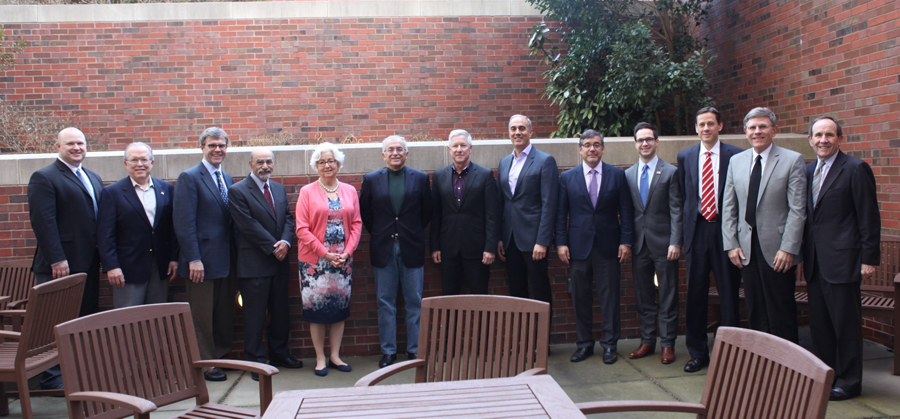
The Radar and Remote Sensing (R-SAT) team met recently at the National Weather Center. Team members are (l. to r.) Nathan Goodman, John Appleby, Kevin Kelly, Fawwaz Ulaby, Victoria Cox, Charles Elachi, Conrad Grant, Carl Banner, Robert Palmer, Scott Mason, Mark Yeary, Kelvin Droegemeier and Berrien Moore.

We've made the front cover of IEEE Aerospace and Electronic Systems (AES) Magazine on the December 2016 issue. IEEE AES Magazine is a monthly magazine that publishes articles concerned with the various aspects of systems for space, air, ocean, or ground environments as well as news and information of interest to IEEE Aerospace and Electronic Systems Society members. This is a special issue on waveform diversity.

- $40k stipend, first year
- Subsequent years are according to the following table.
Students who are interested please send an email to Dr. Mark Yeary at yeary@ou.edu

- $40k stipend, first year
- Subsequent years are according to the following table.
Students who are interested please send an email to Dr. Mark Yeary at yeary@ou.edu